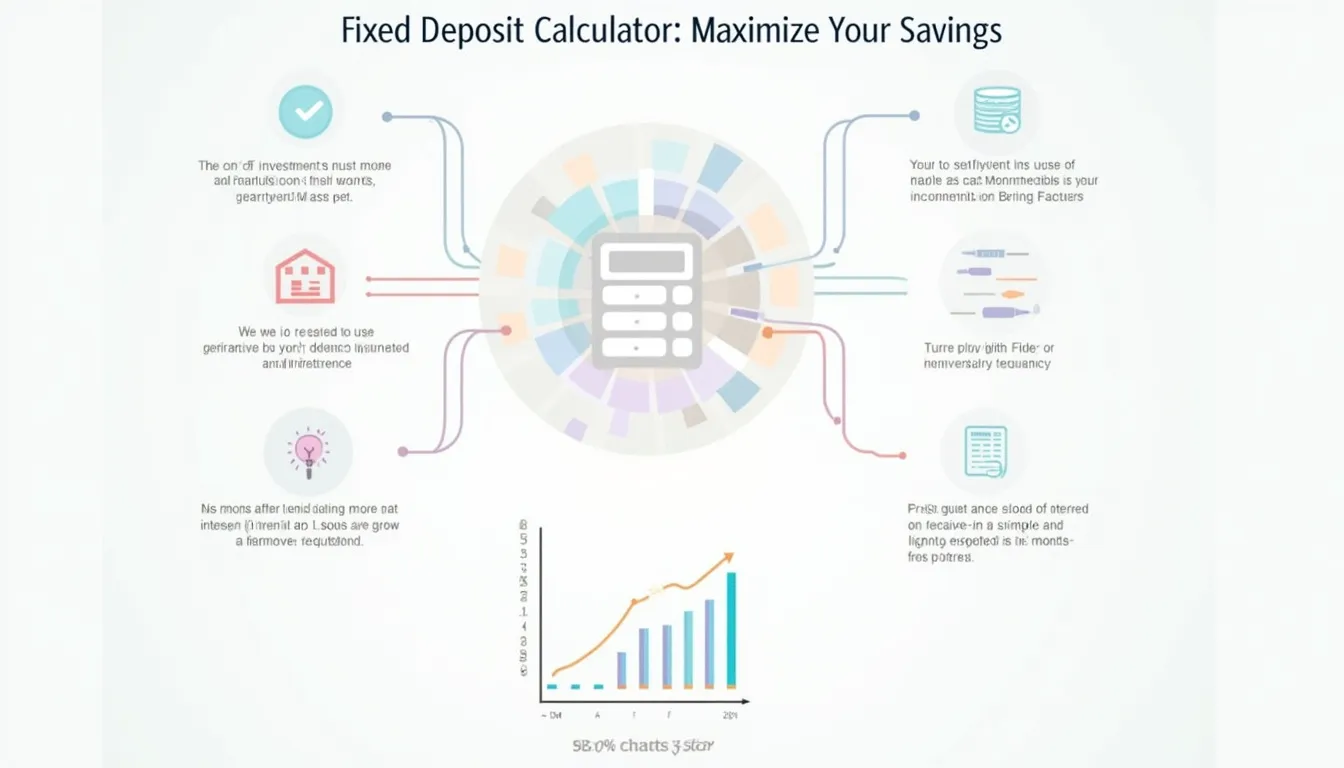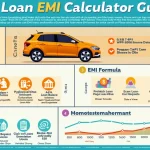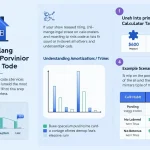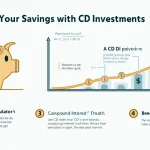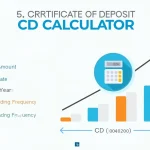FD Calculator
Is this tool helpful?
How to use the tool
- Principal Amount: Type the money you plan to lock away, e.g., 13 500 or 42 750.
- Annual Interest Rate (%): Enter your bank’s rate such as 6.2 or 4.1.
- Tenure & Unit: Provide duration—3.5 years or 20 months—and pick Years or Months.
- Compounding Frequency: Choose how often interest is added—Annually, Semi-annually, Quarterly, Monthly or Daily.
- Interest Type: Select Compound for growth on growth or Simple for flat interest.
- Press Calculate; your maturity amount, earned interest and growth chart appear immediately.
Formulas applied
Compound interest
$$A = P\left(1 + rac{r}{n}\right)^{nt}$$
Simple interest
$$A = P(1 + rt)$$
Worked examples
- Quarterly compounding: $13 000 at 6.2 % for 3.5 y, n = 4
$$A = 13000\left(1 + rac{0.062}{4}\right)^{14}= \$16\,141.71$$ Earned interest = $3 141.71.
- Simple interest: $9 000 at 4.5 % for 20 months (1.667 y)
$$A = 9000(1 + 0.045 \times 1.667)= \$9\,675$$ Earned interest = $675.
Quick-Facts
- Average 12-month CD in the U.S. pays 1.86 % APR (FDIC Weekly National Rates 2024).
- Quarterly compounding yields ~0.3 % more than annual over five years at 5 % (Investopedia, https://www.investopedia.com/compoundinterest).
- Early withdrawal penalties can cut returns by 3-6 months of interest (Consumer Financial Protection Bureau 2023).
- Deposits up to $250 000 per bank are insured by FDIC (FDIC, fdic.gov/deposit).
FAQ
What is a fixed deposit?
A fixed deposit is a time-bound savings product where you commit funds for a set term in exchange for a guaranteed rate of return (Reserve Bank of India, 2023).
How does compounding boost returns?
Compounding adds interest to both principal and past interest, creating exponential growth; Albert Einstein called it “the eighth wonder of the world” (Investopedia, compoundinterest).
Which frequency should I pick?
More frequent compounding—monthly or daily—delivers higher yields because interest is credited more often, increasing the base for future growth (Federal Reserve, 2022).
Can I break the deposit early?
Yes, but banks charge penalties equal to several months of interest, reducing net earnings (CFPB 2023).
Is my money safe?
U.S. fixed deposits (CDs) are insured up to $250 000 per depositor, per bank, per ownership category (FDIC, fdic.gov/deposit).
What affects the maturity amount most?
The trio of rate, term and compounding frequency drives final value; increasing any of the three elevates returns (Money Supply Report, IMF 2022).
How can I double my money quickly?
Use the Rule of 72: divide 72 by the annual compound rate to estimate doubling years—at 6 % you need roughly 12 years (FINRA, 2023).
Why choose simple interest?
Simple interest suits short terms or products where compounding is not offered, such as some treasury bills (U.S. TreasuryDirect, 2024).
Important Disclaimer
The calculations, results, and content provided by our tools are not guaranteed to be accurate, complete, or reliable. Users are responsible for verifying and interpreting the results. Our content and tools may contain errors, biases, or inconsistencies. Do not enter personal data, sensitive information, or personally identifiable information in our web forms or tools. Such data entry violates our terms of service and may result in unauthorized disclosure to third parties. We reserve the right to save inputs and outputs from our tools for the purposes of error debugging, bias identification, and performance improvement. External companies providing AI models used in our tools may also save and process data in accordance with their own policies. By using our tools, you consent to this data collection and processing. We reserve the right to limit the usage of our tools based on current usability factors.
